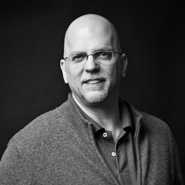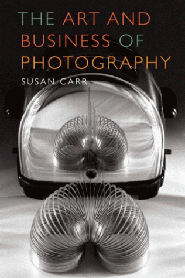 It’s time for another guest post and we’re fortunate to have an excellent article by Buffalo Architectural Photographer Jim Cavanaugh. Today’s entry is excerpted from two posts Jim made as part of a conversation regarding standing up for one’s rights when negotiating with a client. Jim is currently the President of the American Society of Media Photographers (ASMP).
It’s time for another guest post and we’re fortunate to have an excellent article by Buffalo Architectural Photographer Jim Cavanaugh. Today’s entry is excerpted from two posts Jim made as part of a conversation regarding standing up for one’s rights when negotiating with a client. Jim is currently the President of the American Society of Media Photographers (ASMP).
To quote Marlon Brando in “The Godfather”, “It’s not personal, it’s business”. Business is business. The point I wanted to make was to neither just “stand up” or “roll over”. Business is rarely that black and white unless you have a super unique style and are in a high demand, low supply, business. The question is all about the gray areas. If this, then what? Or, the proverbial, “a bird in the hand is worth two in the bush.” But is it? I doubt it.
Our goal is to make money. How best to do that should be a guiding principal. Business is often about compromise. To get to win-win, there likely needs to be a bit of lose-lose. What might you have to give up to get what you need? Take it or leave it tactics have a way of backfiring and bridges burned can last a very long time. A hard line on a philosophical issue my allow you to win this battle, but lose the war.
It’s a marathon. How do you go the distance? As we look at some of the ideas being discussed, I think we sometimes need to put aside the rhetoric and think in terms of working with someone on a personal level. Building a relationship. Being as concerned about the job next year as the one today.
Is it better to “teach a client the value of our work” or show the value by being easy to work with, reliable, professional and likable? Think about what value really is to your clients. It’s not a price tag on a photograph. Value is the entire package.
I have been in business over 35 years and have never been sued or have never sued anyone. I have never been inside a courtroom except to photograph it! But I have had my fair share of disputes over the years. On only four occasions did I even have to consult an attorney and the last time was in the mid 1980’s!
My approach is not to “roll over” and give in. My approach is to find a workable solution to whatever the business problem is. By not being bound by dogma or rhetoric and realizing that this is business and not personal, I almost always find a solution. A few times I have rolled over and walked away, because my business sense told me that to take the issue farther, based on my pride, would be a losing proposition in the long run. But there have been times when I have taken a strong stand and enforced my rights and settled matters to my satisfaction. But in each of those cases, it was clear that any further relationship with that client was over.
I believe that many photographers approach negotiations with a chip on their shoulder (due to previous encounters) and are ready for confrontation. My “being easy to work with” approach is about expecting issues to arise. It is business after all and each party is looking to get the best deal. But concentrating on our areas of agreement and mutual benefit. I don’t start the conversation with, “I own the copyright and you can’t do this…..”
Stumbling blocks arise; price, usage, third parties, etc. My reply is that we can work to find a solution. Sometimes it requires changing the scope of a project. And in some cases it requires the ability to agree to disagree and walk away from the project.
My philosophy on being easy to work with is about what ASMP SB3 Presenter Colleen Wainwright says: “Be useful, be specific, be nice.” (Have a look at Colleen’s excellent blog titled Communicatrix.)
For me, it’s about looking ahead. Finding agreement. Making it easy for clients to work with me. And finding the wisdom to know when to fight and when not to.
(Portrait of Jim Cavanaugh courtesy of Boston photographer Stephen Sherman. Photograph copyright 2011 Stephen Sherman.)
 ASMP’s hot-off-the-presses book helps photographers understand photo markets in the digital age. “The ASMP Guide to New Markets in Photography”, consists of chapters written by individuals having different areas of expertise including including Tom Kennedy, Peter Krogh, Judy Herrmann, Richard Kelly and Colleen Wainwright. My chapter discusses selling in the new economy, what follows is an excerpt:
ASMP’s hot-off-the-presses book helps photographers understand photo markets in the digital age. “The ASMP Guide to New Markets in Photography”, consists of chapters written by individuals having different areas of expertise including including Tom Kennedy, Peter Krogh, Judy Herrmann, Richard Kelly and Colleen Wainwright. My chapter discusses selling in the new economy, what follows is an excerpt:
 I’d best describe this day-long gathering of some of the brightest minds in our business as enlightening and thought-provoking. (If you were unable to attend or did not watch it live, a complete video archive of event is available
I’d best describe this day-long gathering of some of the brightest minds in our business as enlightening and thought-provoking. (If you were unable to attend or did not watch it live, a complete video archive of event is available 

 Michael Albany, a
Michael Albany, a 






 groozi.com is a blog about negotiating and web marketing. Weekly posts are written primarily by me, Blake J. Discher, a
groozi.com is a blog about negotiating and web marketing. Weekly posts are written primarily by me, Blake J. Discher, a 
